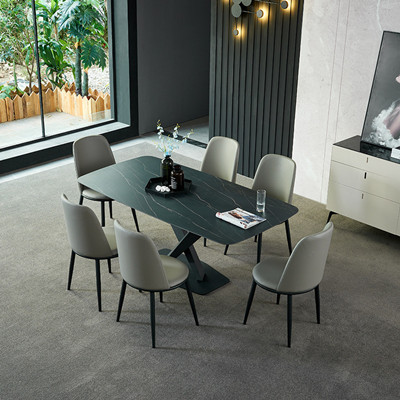The design of your dining table goes beyond aesthetics – it can impact your dining experience on a psychological level. Various design elements influence our perceptions, behaviors, and emotions when we sit down to eat.
Color psychology plays a crucial role. Warm tones like red and orange are thought to stimulate appetite and promote social interaction. Cooler hues like blue and green have a calming effect, potentially leading to more relaxed and enjoyable meals.
Table shape also has psychological implications. Round tables promote inclusivity and equality, as there are no distinct “head” or “end” seats. This encourages more balanced conversations and a sense of togetherness. On the other hand, rectangular tables with distinct ends might foster a more hierarchical dynamic.
Texture and material influence tactile perceptions. Smooth surfaces can evoke a sense of cleanliness and modernity, while rustic textures create a cozier and more informal ambiance.
Lighting design plays a significant role as well. Well-lit dining tables enhance visibility and highlight the food, contributing to a positive dining experience. Dimmer lighting can encourage relaxation and intimacy, making it suitable for romantic dinners or smaller gatherings.
Even the arrangement of chairs can affect social dynamics. Chairs placed closely together encourage interaction, while more spaced-out chairs allow for a sense of personal space.
In conclusion, the design of your dining table isn’t just about style – it can shape your dining experience in unexpected ways. By understanding the psychological nuances of design elements, you can curate a dining space that enhances mood, fosters connections, and makes every meal a memorable experience.








